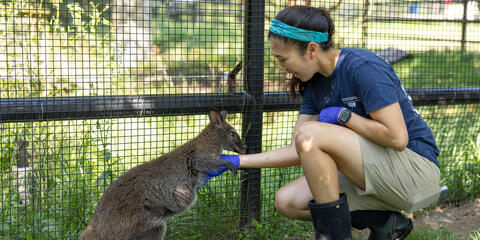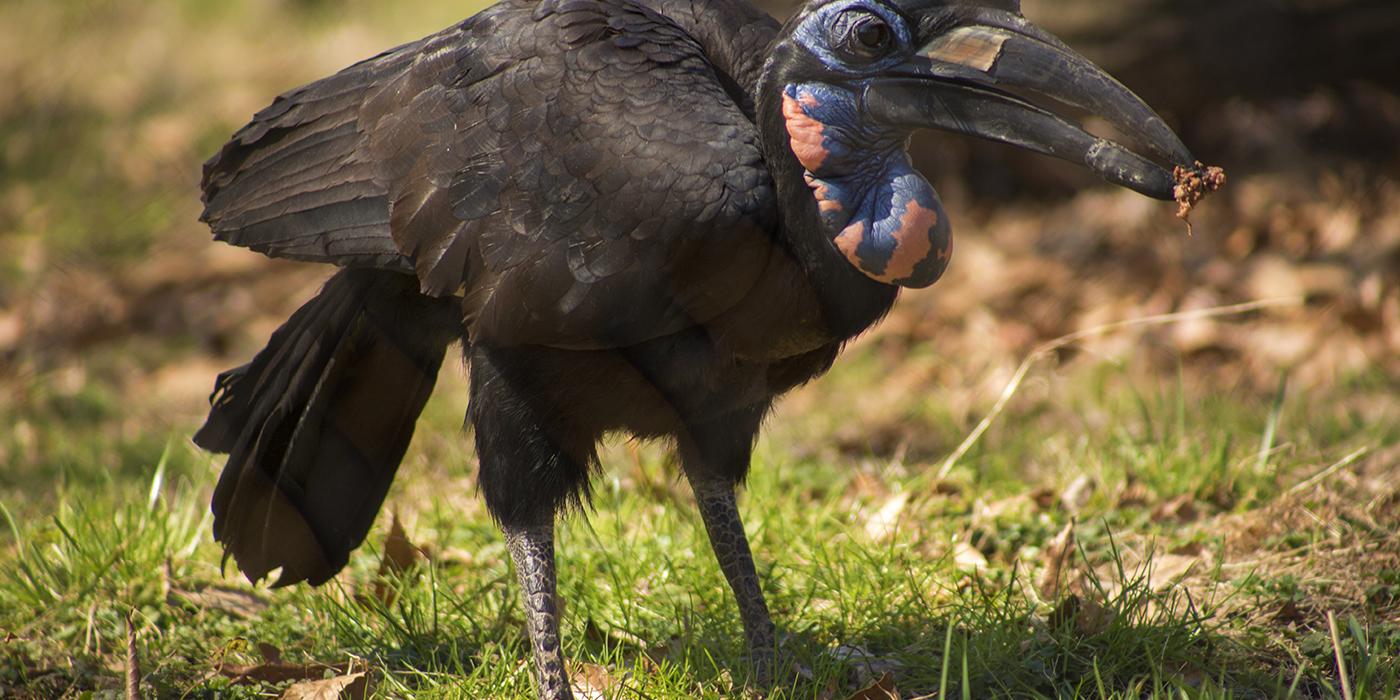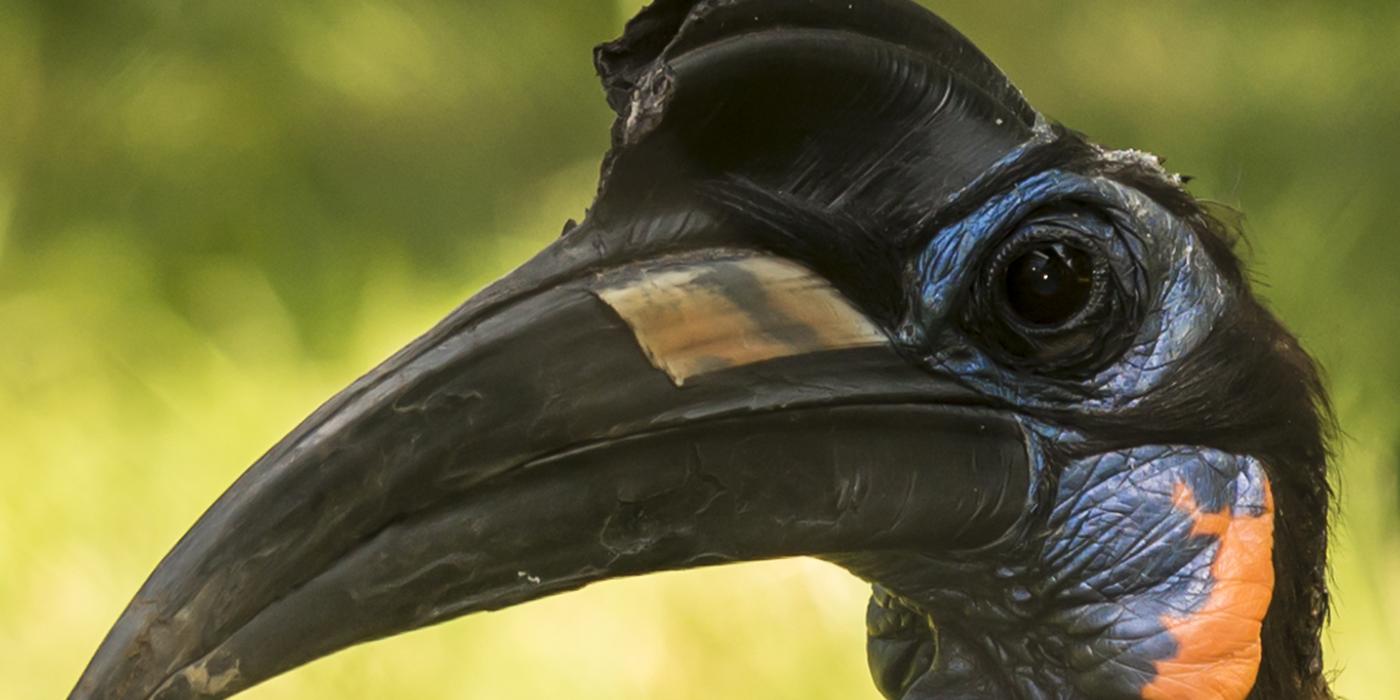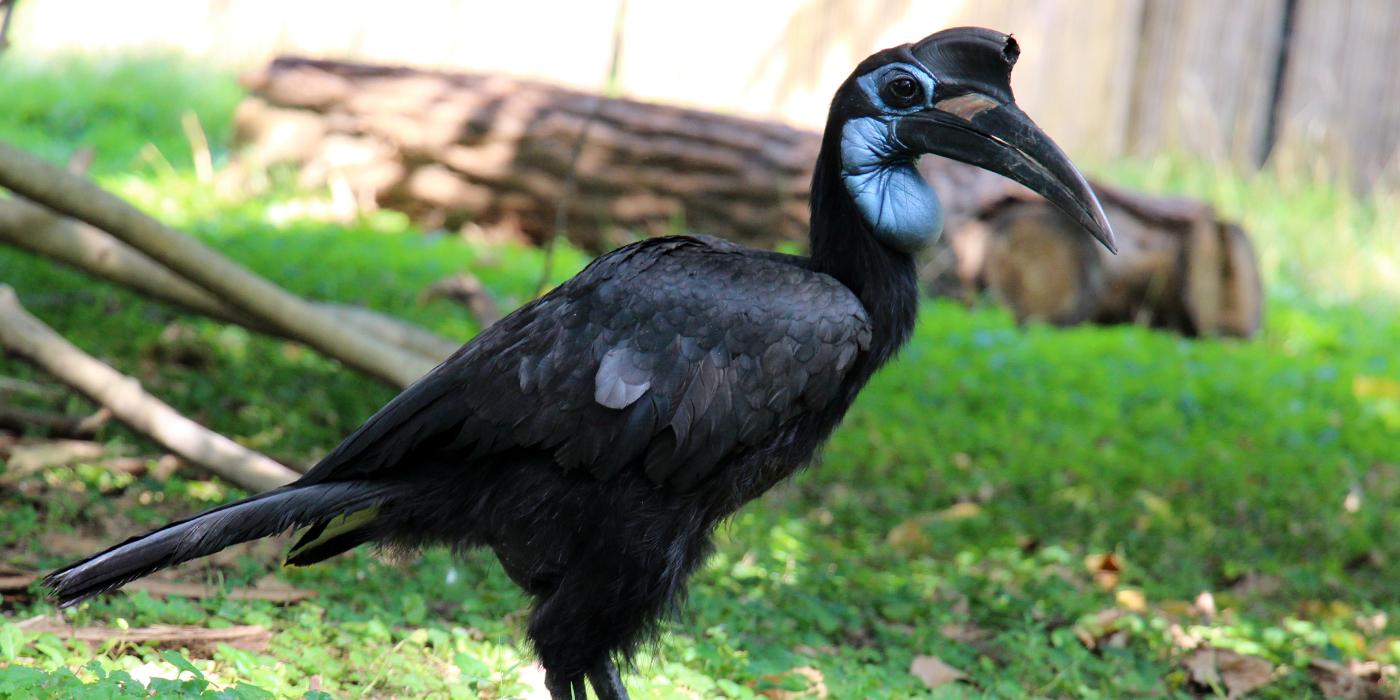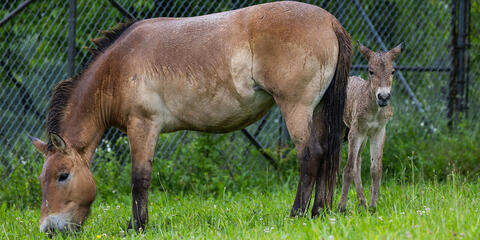Abyssinian ground hornbills are large, primarily terrestrial birds that live in savannas, grasslands, and scrub across north-central Africa from Senegal and Guinea on the western coast to Ethiopia on the eastern coast. They have to have a tree in their habitat to nest.
Physical Description
An Abyssinian hornbill's most obvious identifying feature is its large beak, topped with a bony prominence called a casque. However, they also boast striking features including long eyelashes, distinct facial markings, a yellow mark at the base of their beaks, and long legs that help them forage. Males sport blue and red coloration on their throats and blue around their eyes, while females only have blue on their eyes and throat. Males are also normally slightly larger than females. Juveniles have brown feathers and less vibrant throat coloration.
While they are able to fly, Abyssinian ground hornbills prefer to run if threatened. They will, however, fly to catch prey or defend territory.
Size
Similar in size to a wild turkey, Abyssinian hornbills are large birds about 40 inches (102 centimeters) long and weighing up to 8 to 11 pounds (4 to 5 kilograms).
Native Habitat
Abyssinian ground hornbills span the width of north-central Africa from Senegal and Guinea on the western coast to Ethiopia on the eastern coast. Primarily a terrestrial bird, Abyssinian ground hornbills live across the savanna, in grasslands and sub-desert scrub, as well as rocky areas. They have to have a tree in their habitat to nest.
Lifespan
Lifespan in human care is up to 40 years, but is unknown in the wild.
Communication
Males and females have been observed singing together in duets.
Food/Eating Habits
Primarily carnivores, Abyssinian ground hornbills eat reptiles such as cobras, tortoises and lizards, as well as mammals like hares and mongooses, and insects and arachnids. Occasionally they will scavenge for carrion to supplement their diet, as well as consume seeds and fruit. Abyssinian ground hornbills will travel up to seven miles (11 kilometers) each day in search of food, overtaking and consuming prey they encounter. These animals have been observed following ungulate herds and forest fires to feed on prey fleeing disturbances.
At the Smithsonian's National Zoo, Abyssinian ground hornbills are given Nebraska Brand Feline Diet, mice, mealworms and crickets.
Sleep Habits
Diurnal animals, these hornbills are awake and active during the day. They roost in trees at night.
Social Structure
These animals are often seen in pairs in the wild, occasionally flocking in groups to protect young.
Reproduction and Development
Abyssinian ground hornbills are monogamous animals, with males helping care for females and young during the incubation stage. Breeding time depends upon location, with pairs residing in Nigeria and Uganda breeding in January, Kenyan pairs breeding in November, and West African populations breeding in June-August. Nests are constructed in the cavities of trees, with rock holes or synthetic cavities utilized when trees are unavailable. Males prepare the nest cavity by lining it with dry leaves; females will then lay one or two eggs over the course of five days. Incubation lasts 37 to 41 days, with the male providing food for the incubating female.
Incubation for Abyssinian ground hornbills begins with the first egg, so one hatchling will mature more quickly and grow faster than its nest mate. Newly hatched chicks normally weigh about 2.5 ounces (70 grams), with both mother and father investing heavily in the hatchling's future. The second hatched chick will often die of starvation as its larger sibling prospers, with the stronger hornbill chick sometimes growing five times its first-hatched weight in its initial four days. Parents will protect and provide food for their offspring, which will remain with the pair for up to three years. Abyssinian ground hornbills breed about once every three years, with on average one chick surviving to adulthood every nine years.
Conservation Efforts
Preferring grasslands, this animal has done well around human development and is experiencing a diminishing threat as predators disappear. Its primary potential threat is a loss of trees for nesting due to human development. A lesser threat to Abyssinian ground hornbills is native hunters who will kill the bird in order to use its head as a mask while hunting other animals.
Help this Species
- Reduce, reuse and recycle — in that order! Cut back on single-use goods, and find creative ways to reuse products at the end of their life cycle. Choose recycling over trash when possible.
- Share the story of this animal with others. Simply raising awareness about this species can contribute to its overall protection.
Animal News
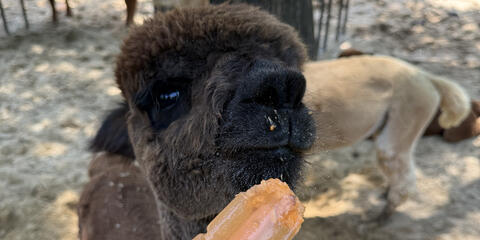
Keeping the Farm Animals Cool with Frozen Treats
